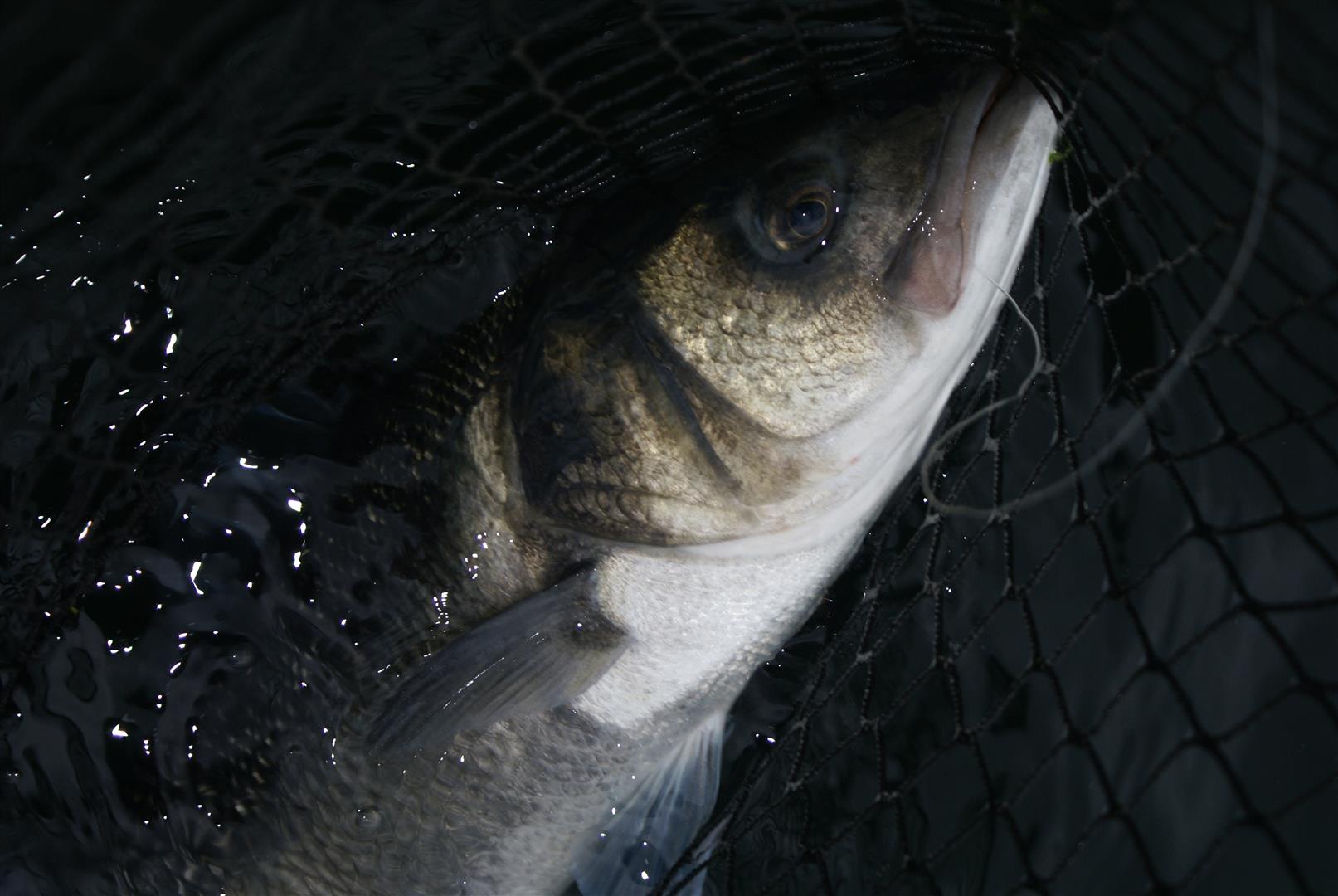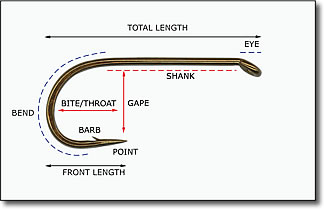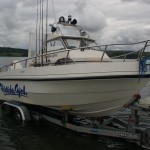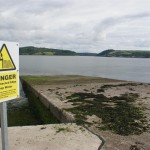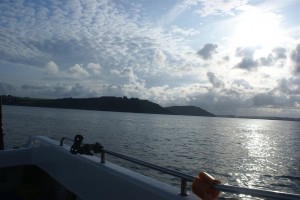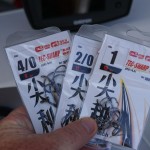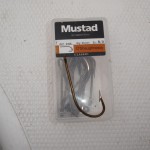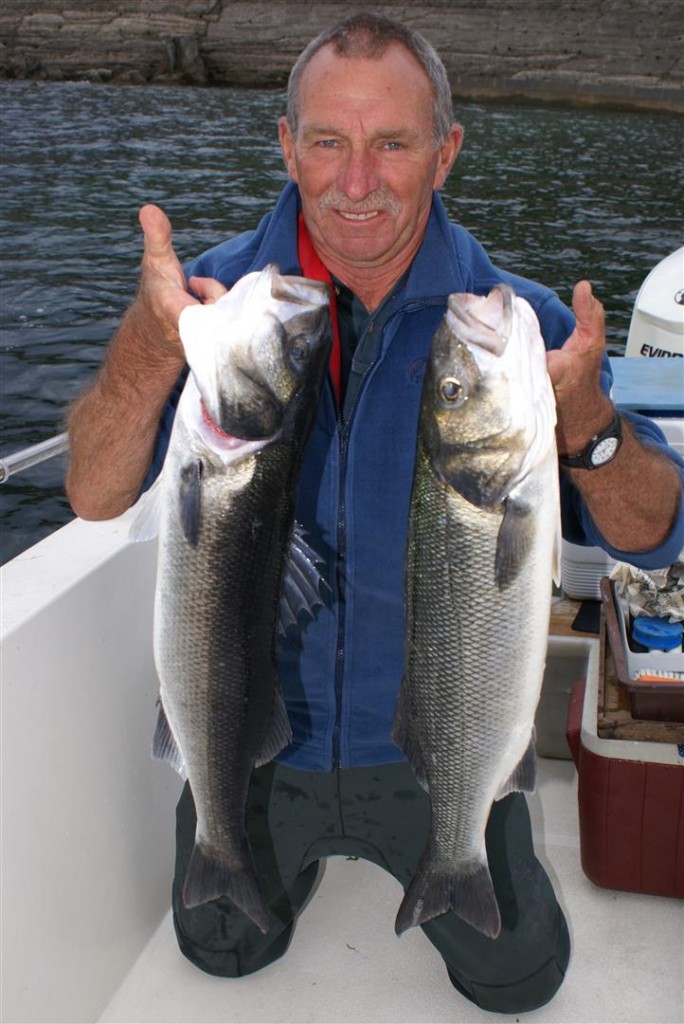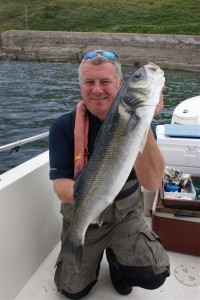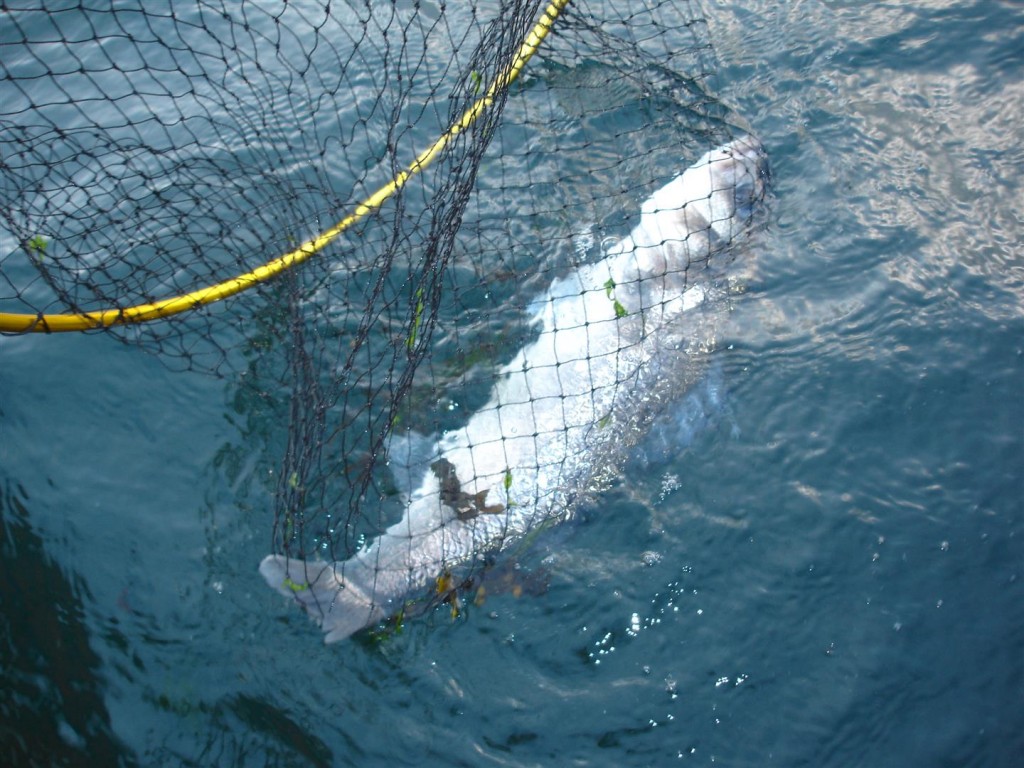Hooked! - That crucial component between the fish of a lifetime and your line – Jim Clohessy talks hooks, lines but not sinkers!
Many years of trial and error has me confident that the current crop of terminal gear I use is good quality gear that will stand up to the rigours of a tough set of sessions and it has not let me down yet
Over the years I have been extremely fortunate with regards to the fish I have caught. Already I have a lifetime of stories of great or big catches in superb locations from some of the best venues around the country. Thankfully I have very few stories about the ones that got way! Well maybe that is not entirely correct! I have been smashed by big fish while not paying attention. I have had wondrous specimens spit hooks back at me with contempt on the surface. And once I even had a ferocious shark escape due to an unexplained parting of some new line I was experimenting with. My therapist has told me to forget all the other instances!
Over the last few years I have refined my tackle and rig building equipment to such an extent that I tend to change little from year to year. Why is this? It’s because many years of trial and error has me confident that the current crop of terminal gear I use is good quality gear that will stand up to the rigours of a tough set of sessions and it has not let me down yet. All that said, I am as big a sucker as the next angler and regularly try out the latest fads and new gear on the market. If the gear works out I will add it to my tackle box if not I’ll probably never admit to using it in the first place!
Hooks
Man has used hooks to catch fish for over 9000 years! There have been many prehistoric finds from Egypt and even Czechoslovakia. Most were made from wood or bone and it was not until the 1800’s that the first hooks that resemble what we use today appeared on the market. At first thought you would reckon that a hook should be a fairly simple piece of equipment but nothing could be further from the truth. The science and engineering that goes into producing a quality hook that is of consistent quality is amazing and is still developing. The first hooks that I used to tie my own traces were evil yokes! They were a chrome plated Beak pattern hook that most anglers over the age of thirty will remember. To be fair they were cheap and they did the job on the day, most of the time, but by the time you came to use them again there was a good chance you were left with what resembled a chrome-peeling, brittle rusty nail. Eventually I began to experiment with different patterns and it was my early forays into shore angling that set me checking out different patterns in order to increase the quality of my bait presentation. The use of worm and crab baits and the need to use a hook that was smaller in profile was the driving force in my hook selection. Also I was in a position to afford a good selection of hooks rather than parting with pocket money! The dinghy angler who wants to tie up their own traces and has not much clue about hooks is in for a bit of a shock. The sheer amount of manufacturers is daunting. The array of different sizes and patterns is huge. There is no standard on sizes so a hook of a particular size from one manufacturer may differ slightly from the same size from another maker. There is a fair range in pricing from the cheapest to the dearest.
I got to thinking about hooks on a recent trip in Cork Harbour. Rather than launching SKUA I took the opportunity to fish with a buddy from the UK who was over on holidays. Gordon Thornes would be a regular visitor to these shores, he does as much shore angling as boat angling. I was looking forward to fishing from his boat Uptide Girl. I always like getting out in somebody else’s dinghy – You just never know what tips you can pick up as to the set up of an angling boat. Uptide Girl has won the Cork Small Boats Festival more than any other boat so there’s more motivation for fishing – I might learn something! Gordon bought this boat a good few years ago in Holland. I reckon the hull is the same as an Offshore 535 but it is kitted out with a small cuddy in order to facilitate walk around access to the bow. The boat is heavy and therefore Gordon has recently upgraded to a 150hp Evinrude Etec but he has never driven the boat at full throttle! At 4000 revs, with the engine purring quietly, the hull is flying along at a comfortable twenty eight knots so why bother.
We launched from the slipway at Lower Aghada, launch site for the Cork Small Boats Festival. Launching here is for members only, though they accommodate visiting anglers with day launching for a fee. The facilities are good – there is fresh water for washing down and the slip is in good condition. There is ample parking and your worldly goods are safe in a friendly locality. The gradient is a little poor at low water so it is best to avoid the bottom of the tide here. A smooth trouble free launch and we are soon heading for some sheltered corners of the harbour to try and winkle out a few bass. Bass have been the mainstay of angling for us during mid-summer months that should offer loads of choice in terms of species to chase. Unfortunately the weather Gods choose to hammer us with incessant winds that make our choices limited. And I thought we could not get a third bad summer in a row!
Enough about the weather, we settled into our first mark of the day and anchored up. We busied ourselves peeling some prime peeler crab and sorting through a tub of lively ragworm to select the biggest and most ferocious of the worms. I let loose a one up-one down rig made from 30lb fluorocarbon weighted down with 3 ounces of lead, just enough to hold in the coming tide but light enough for me to use a light spinning outfit, perfect for flicking away from the boat. After peeling a few crabs for the next cast we sat back and waited for a bite. I picked up one of Gordons traces to examine its construction and soon we were chatting about our favourite set ups and it was clear that we differed on some areas of trace making. I could immediately see Gordon’s matchmans heritage. His leger was constructed with size one fine wire hooks and light fluorocarbon. His snoods were connected to the body of the trace with a swivel crimped between two beads. My simple setup had the minimum of fuss with my snoods tied off the main body of the trace with a dropper loop. My hooks were the same Aberdeen pattern but of heavier wire. I commented on the lightness of Gordon’s hooks. He has a passion for Kamasan as he likes the sharpness. He will replace the hooks on his rigs regularly as the Kamasans will not last as long as the Mustad 3261’s that I am using. I feared the effect that a ten pound bass would have on light hooks. There was little to fear as our first bass of the session barely touched the scales at three pounds!
Mustad 3261’s have been the mainstay hook of my tackle box for a few years now. They really suit the dinghy angler for a number of reasons. The first is that they are strong. They are as sharp as any other hook that I have used and most importantly they last. Drifting with legers is generally not too hard on tackle. The amount of lost traces is not huge if you know the ground you are fishing and as a result it is important that your hooks are able to put up with a period of storage without rusting and losing their edge. I never thought I would see myself using a Beak pattern hook again but yes it has to be said – The Beak is back! I have been alternating between my trusty 3261’s and Surecatch Tec-Sharp Beak hooks. Gone are the chrome plated bendy hooks of the past. These are seriously strong and sharp. They have a short shank and a seriously wide gape, ideal for fishing crab or fish baits. I have stored traces on winders after fishing and they are standing the test of time. The pattern is almost like a circle hook and they are finished in black nickel. The point is slightly kicked to the side which the boffins say makes for more lip hooked fish.
For the big stuff it is hard to go beyond the trusty O’Shaughnessy pattern. For wrecking and congering using big fish baits the O’Shaughnessy in 6/0 or 8/0 rules supreme. Most manufacturers have a version of this pattern and the Mustad bronzed is very reliable. You can get good quality bulk hooks from some manufacturers but check the quality before you invest. Heavy fishing exerts heavy forces and any weak link will be exposed by the efforts of a big conger or ling.
You should take great care when purchasing store-bought traces. I have noticed that the price of a basic set of Hokeye type lures has tumbled over the years. Some of these can have hooks of dubious quality. And while it is always better to stick to the established makes; if you are going to take a chance on a cheaper set it is better to buy only a couple of sets to begin with and take the chance with new traces when it matters least – like when you are out for a relaxed trip rather than in a competition situation. Better to discover a weak set of hooks with a couple of sets in the tackle box rather having a bulk quantity of traces that you cannot risk giving to your friends! Many anglers go to the trouble of destructing traces and retying the lures themselves using new hooks and line. I think buying quality makes of gear in the first place makes more sense to me.
Line
As you may have gathered I am a fluorocarbon convert. Though with the price of this line I am selective where I use it. Certainly when bass or bream fishing I will use Flouro. I am happy using good quality mono for traces for drifting open water and there is no way I could justify using Flouro on wrecking or conger traces – such are the tackle losses. There are as many views on the different manufacturers as there are manufacturers and I have tried many of the makes out there and have settled on Surecatch because it is reasonable priced and has not let me down yet.
I am exclusively a braid angler. All my reels would be loaded with braid. I had lots of teething trouble transferring to braid on my spinning reels but have settled to using twenty or thirty pound Bobcat braid and have not looked back since. I do think that it takes more discipline to use braid on a spinning reel as you have to be more vigilant each time you retrieve. You must glance to the spool to ensure that there is no loop on the top of the spool. This loop will become the mother of all wind knots as it peels off on the next cast. I still carry a spare spool of mono with my tackle just in case my old curse returns!
Meanwhile back on Uptide Girl – Stage of tide had us weighing anchor and heading to the outer regions of Cork harbour. It looked like many skippers were making use of the fine weather as there were plenty of Warriors dotted around the place. We slipped into a rocky mark, anchored, and set ourselves up with floats and legers. By now the tide was flooding strongly and it looked like ideal conditions. Sure enough we had a good bass within ten minutes, a fish approaching eight pounds that shot off like a missile as I lifted the rod tip to set the hook. I use braid on my spinning outfit and I could feel every aggressive head shake of the fish as it peeled line from my reel. The soft tip of the rod compensates for the lack of stretch and a well-set drag is a must for this style of light gear fishing. Just I called for the net Gordon grabbed his rod and struck into another fish – the feed was on. I netted my own fish and put the fish into a bucket of water while waiting for Gordon to get his bass to the boat. After a good tussle I slid the net under the fish and landed it on deck. After some oohing and aahing and a few pictures we placed the fish in the landing net and after a couple of minutes the fish powered away strongly.
C&R
I have no problems with keeping a fish for the pot but I think our bass are too important a resource for anglers to take even their legal entitlement every time they go fishing. Looking around Cork Harbour it is plain to see that there are more anglers than ever fishing for bass. The Bella Vista Hotel in Cobh has a fleet of self-drive boats that are busy each week catering for anglers from around the country and abroad. There are more and more dinghies travelling from the furthest reaches of the country and like Gordon, from the UK – all to have a crack off a Cork bass. Anybody can see that the amount of money being generated for the local economy is huge. It is more important now than ever before that the protected status of bass is maintained and the authorities are even more vigilant in the protection of the stock. Anglers need to be responsible as well – three anglers on a small boat are entitled to take six fish – too many in my book.
As the tide neared high water the fishing began to tail off but we were reluctant to head for home it was such a nice evening. We continued to change baits and rigs and reflected in the magical location and quality of the fishing. We had had six bass between us for the session all bar the first fish were big, quality bass. Most succumbed to legered crab baits though one fish snaffled a live launce. I would consider myself a relative novice in bass fishing terms and I would regard this as a good session. I have caught more bass in a session but nowhere near the quality of fish. Gordon, who would be an experienced bass angler, was equally impressed: “You people must continue to protect your bass stocks, the fishing here is special – if you have the fish people will come!”
This article was previously featured in Irish Angler in 2009

